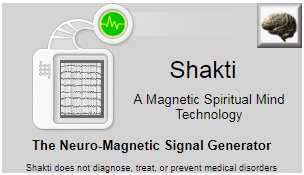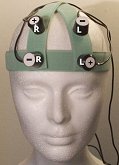
Main
|
. |
Lucid Dreaming
It’s important to understand that Shakti should not be considered a device for inducing Lucid Dreaming. There have been too few reports of Lucid Dreaming to warrant such an expectation. However, Shakti has been used to accomplish lucid dreaming. There have been no laboratory studies about it, but there have been a few Shakti reports – and a pattern has been emerging.

The pattern is that Lucid dreaming is most likely to be reported when one session is used. It alternates a signal derived from the amygdala with one derived from the hippocampus. These two signals (“The amygdala and hippocampal signals in sequence”) are applied over the frontal lobes.
In these cases, Shakti sessions were first done over the temporal lobes, followed by a session over the frontal lobes. A careful study of this effect will probably find that effective sessions over the temporal lobes using the same signals will be a prerequisite for lucid dreaming using this approach.
There have been other reports of lucid dreaming with this technology, but the ones that followed this pattern suggest a specific strategy, while others did not. There have not been many reports of lucid dreaming accomplished this way.
The most important factor will be how prone the individual is, and not everyone is equally likely to have the experience.
A sober approach would be to do five Shakti sessions over the temporal lobes, with the sixth (and last) in the series being the frontal lobe session using the “Amygdala and hippocampal signal in sequence”.
Other dream-related effects have been reported, such as increased dream recall, and increasingly vivid dreams.
The two-phase session that applies a ‘chirp’ signal to both temporal lobes, followed by the hippocampus signal over the right temporal lobe can also be expected to elicit dream-related effects, especially when the session is done between an hour and 90 minutes before going to bed.
Here is a link to a forum where using Shakti for lucid dreaming is discussed. LINK (Note: the link will be removed from this page if “Trolls” and “Flamers” get into it)
If the pattern in reports is maintained, then it will suggest (together with related studies) that the shift in emphasis from the temporal lobes to the frontal lobes might circumvent left/right temporal lobe differences that ordinarily inhibit lucid dreaming. This is a speculation only. More research is needed to develop an exact idea about the neurological bases for lucid dreaming.
_________
NOTE: The Four-Coil Shakti is no longer available.
You can see the Eight-Coil Shakti here.
.
.
.
.
.
.
.